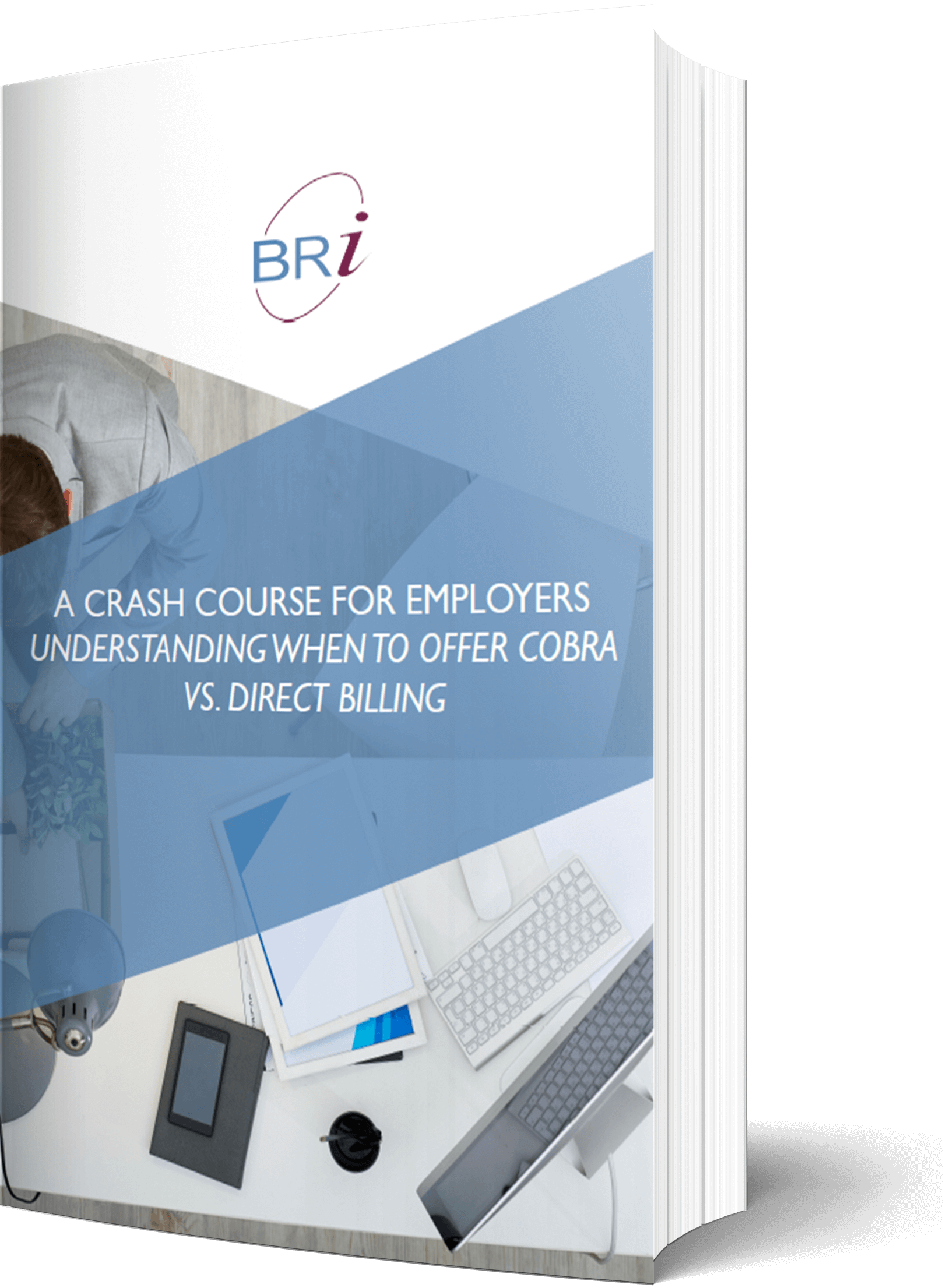In the latest report from the U.S. Bureau of Labor statistics, unemployment rates in various states ranged from 4.3% (in KY) to 17% (in MA). While unemployment can lead someone to be eligible for COBRA, depending on the situation, COBRA might not be appropriate or even required. Certain situations might call for direct billing.
The reality is COBRA is complicated. However, with the right tools, you can effectively collect COBRA premiums during COVID-19 and reduce your risk exposure.
Step #1: Identify potentially eligible employees
The COVID-19 pandemic has presented employers challenges with determining which employees are eligible for COBRA. As a quick tip, if a covered individual experiences a loss of coverage, COBRA must be offered.
To aid employers, we created a crash course on “Understanding When to Offer COBRA vs Direct Billing“. Download your copy today to learn if you need to offer COBRA, which employees are eligible for COBRA and more.
Quick Tip
If a covered individual experiences a “loss of coverage”, COBRA must be offered.
Step #2: Determine when someone is eligible for COBRA
Employers are facing some difficult decisions these days. When the pandemic first began, there was optimism that employee furloughs would be temporary. For many employees, a furlough (rather than a termination) meant they could maintain their benefits.
As the pandemic extends beyond initial projections, employers are being forced to reevaluate their long-term plans. In some cases, employers have had to officially term employees. This may create a point of confusion for employers regarding when the employee actually became eligible for COBRA.
The first step is to address when the employee became eligible for COBRA. Thankfully, this is simpler to identify than might be expected.
Since COBRA must be offered when there is a loss of coverage, an employee would be eligible for COBRA as of the qualifying event which caused the loss of coverage. For example, if coverage loss occurred as a result of the formal employee termination, that is the date the individual became eligible for COBRA.
Step #3: Shore up unpaid premiums
Employers who chose to offer employees coverage during furlough have different options for how to collect COBRA premiums:
- Asking the employee to pre-pay
- Collecting the premiums upon return
- Directly billing an employee throughout the leave
The nature of the pandemic and its sudden impacts made pre-payment an unlikely option for most employers and employees. That leaves collecting premiums upon return and direct bill.
Direct Bill
Let’s say an employer is using direct bill. If the employer established direct bill, hopefully they were in good shape and had the correct measures in place to minimize past-due premiums from employees. Employees should have been making premium payments throughout their leave.
Collecting Premiums
If the employer chose to collect COBRA premiums upon return, they would have to take a few additional considerations into account. For employees that were returning to work, they would have to decide how to collect the premiums; immediately upon return in the first paycheck? collected over time?
For individuals that will not be returning to work, employers will need to decide how they will collect premiums. If any payroll remains, they can collect from the final payroll. If not, the employer would likely need to invoice the individual for the prior premium payments.
COBRA will only cover premiums required from the date of the loss of coverage and would not cover periods where the individual was still considered covered by the employer.
It is never too late to get it right
Employers may identify situations where they should have offered COBRA, but did not.
Given the nature of COBRA penalties, it is always better to send a late notice rather than no notice at all. This limits the employers risk exposure as fines, if applicable, are calculated on a daily basis. Additionally, fines and potential risk exposure can be higher if it is determined there is willful neglect.
The pandemic creates some additional considerations since employees have more time to enroll in COBRA. This makes it even more critical to right a wrong.
See how working with the right COBRA partner can streamline the management of collecting COBRA premiums. Contact us today.
Resources
Bureau of Labor Statistics, U.S. Department of Labor, The Economics Daily, Unemployment rates rose in 29 states and the District of Columbia in March 2020 on the Internet at https://www.bls.gov/opub/ted/2020/unemployment-rates-rose-in-29-states-and-the-district-of-columbia-in-march-2020.htm (visited July 21, 2020).




